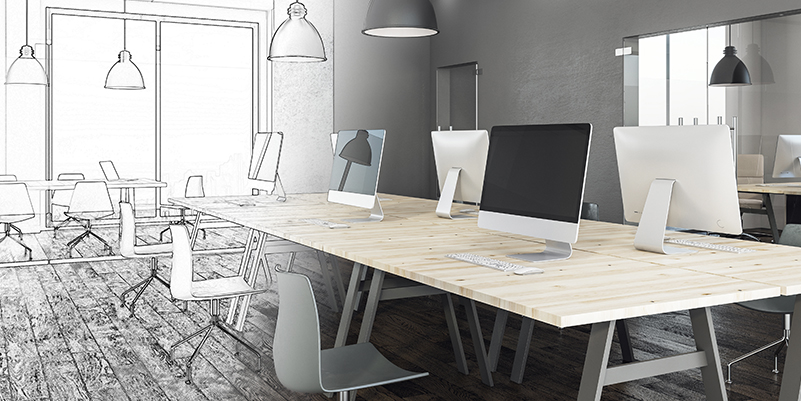Mapping Out a Layout for Your New Office

One of the most crucial components of moving into a new office is taking the time to map out its layout well in advance of the relocation. Maximizing space in such a way as to best benefit your team and its unique dynamic will go a long way in ensuring productivity doesn’t take an unnecessary dip during, and even after, the transition.
Taking Inventory
While each corporate environment is different, there are a few general guidelines to follow to minimize upheaval, the first being to leave as much of the furniture and office equipment moving and set up to the professionals. Focus instead on organizing individual workstations, gathering important paperwork, and maintaining the flow of daily business.
As you begin to comb through items and create an inventory list—ideally, about three months in advance of the move—this will give you an idea if downsizing is an option. Depending upon the new locale and its spacing, you may have a completely different environment to work with. Be sure to take measurements to assess how to best lay out a floor plan.
Maximizing space will always be at the forefront, and it’s helpful to keep in mind that larger pieces may be able to be disassembled and reassembled in a more ideal manner. Those that don’t fit can be donated to a nonprofit, or sold to help cover the expenses of redecorating.
Design With Employees in Mind
There has been much written regarding the merits of an open office layout with minimal enclosed offices, versus one that relies on the structured cubicle mentality. While general opinion seems to have swayed to the more collaborative nature of an open floor plan, the dynamics of your particular office should be considered before making any final determinations. Common spaces, such as lunchrooms, lounge areas and conference rooms, by their nature invite socialization, whereas walls and dividers may indicate a need for higher levels of concentration.
The key to a successful office design lies in balancing the flexibility of the space with privacy options. Assessing the needs of your creative department versus the sales staff, for instance, may lead to further evaluation of the design best suited to maximize productivity and employee satisfaction. Departments such as human resources, legal, and accounting require security, and so typically reside in some sort of enclosed area. Regardless of the makeup of your team, it’s vital to consider the opinions of all employees, their respective positions and personalities.
Tech, Front & Center
Begin the process by accounting for those existing elements you plan to retain, as well as necessary data and electrical outlets. By sketching out initial ideas on paper, you can incorporate a copy of the current floor plan or blueprint, and make adjustments as needed. Mark those walls and spaces you intend to remove, adding in workstations, desks, storage pieces, and office fixtures where appropriate.
Technology is obviously an integral component to any office layout—especially those that are open—both at workstations and in common areas. When mapping out your new office, try to include items like computer servers, printers, internet, Wi-Fi and VoIP equipment. For added flexibility, it may be useful to pair wireless connectivity with cloud services.
Lastly, add in new wiring, furniture and fixtures, and adjust the placement of workstations, accordingly. There are online layout tools that may be useful to experiment with various designs, taking into account the role future staffing changes and department growth may come to play down the line.
The layout of your new office environment may fluctuate throughout the planning process, which is why it’s important to delegate as many tasks as possible to a professional office moving company, so your attention can be solely focused on maximizing productivity for your employees—not only during the transition, but for many years to come.
For more information, or to request a quote for your upcoming office move, contact Steinway Moving & Storage today.


Leave a comment
Your email address will not be published. Required fields are marked *